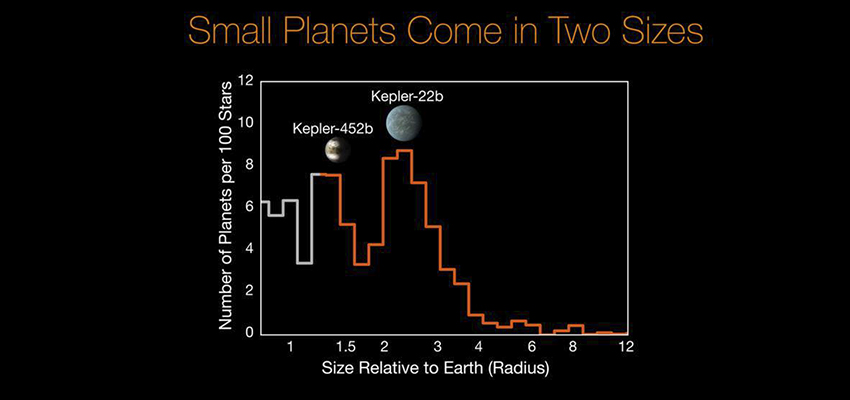
HWS News
22 September 2017 • STEM Hebbs Planetary Research Profiled in New York Times
A recently published study by Assistant Professor of Physics Leslie Hebb and her colleagues has made the search for extraterrestrial life a little simpler.
The study measured the radii of more than 2,000 planets discovered by NASAs Kepler satellite and found two distinct planet classes, what Hebb and her co-authors have dubbed sub-Neptunes and super-Earths. Their findings, published this spring in the Astronomical Journal, demonstrate for the first time that this gap in the distribution of planetary sizes marks the boundary between rocky planets like Earth and gaseous planets like Jupiter.
"And so with a relatively simple measurement of the size of an extra-solar planet," Hebb says, "we can now easily determine whether a planet is rocky or not and thus determine the specific planets that have the greatest suitability for life."
As noted in a June The New York Times article profiling the research, based on the data there could be billions of Earth-size planets in the Milky Way basking in lukewarm conditions suitable for liquid water, and so perhaps life as we think we know it. The Kepler team will refine those estimates with their new data.
Hebb, who joined the HWS faculty in 2013, has numerous academic publications in her field of astronomy. Her awards include academic scholarships from the ARCS Foundation (Achievement Rewards for College Scientists), the Society of Women Engineers, the Cibrowski Foundation and the IBM Scholars Program. She was awarded a ZONTA International Amelia Earhart Fellowship in 2001 and was honored as the Outstanding Senior Woman upon graduation from the University of Denver. She is a member of Phi Beta Kappa Honor Society. She was recently awarded a grant from the National Science Foundation to study magnetic activity on low mass stars using data from NASAs Kepler satellite.
Hebb holds a Ph.D. and M.S. from The Johns Hopkins University and a B.S. from the University of Denver, and was a post-doctoral research assistant with the SuperWASP transiting planet survey at the University of St. Andrews. She was a post-doctoral scholar at Vanderbilt University, where she also served as an assistant research faculty, and later was a visiting faculty member at the University of Washington.

